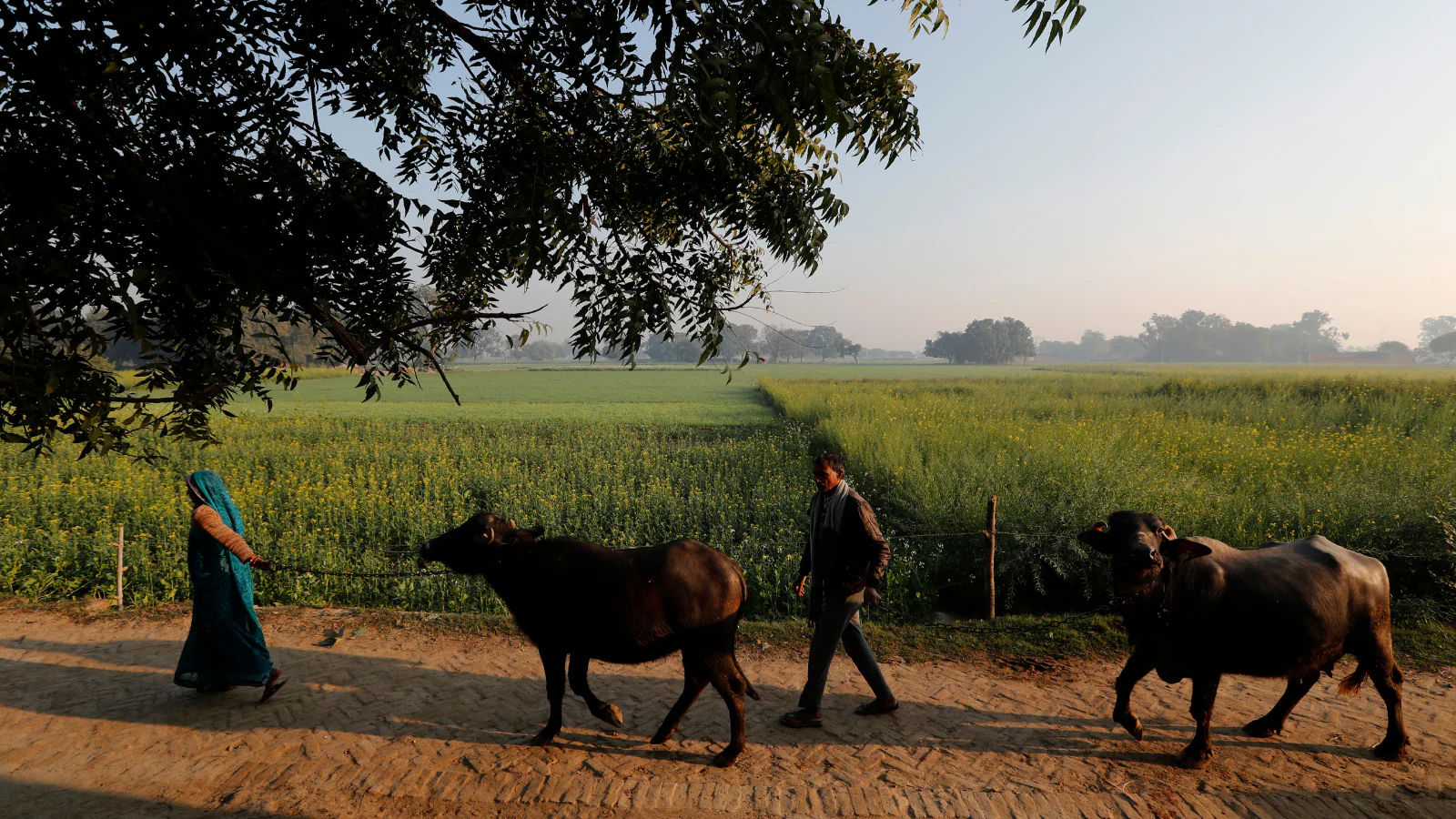By As Mittal,News18
Copyright news18

US President Donald Trump’s imposition of a steep 50 per cent punitive tariff on Indian imports came into effect on 27 August, is not just a diplomatic setback; it is a stark reminder of how unequal the global farm trade is. The United States has justified the move as “reciprocity” for India’s refusal to open its markets to American genetically modified (GM) crops such as Maize and Soybean. In reality, it is the familiar playbook of wealthy nations: protect their farmers with massive subsidies, demand access for their high-yield GM surpluses, and penalise competitors who resist. The result is a global agricultural system where small and marginal farmers in developing economies like India remain trapped in a cycle of low productivity, debt, and poverty.
However, India’s decision to refuse the opening of agricultural markets to US imports was a necessary measure to protect our farmers in the short term, as they are unable to compete with US farmers. In the long run, genuine farmer welfare is simply about keeping competition at bay. It requires equipping farmers with the high yield alternative to GM crop varieties, modern irrigation, storage, and precision agriculture, which will significantly increase yields and lower input costs and providing international market access, enable them to thrive without perpetual protection and reducing post-harvest losses from the current 15–20 per cent to the global standard of 5 per cent can release vast quantities to enhance competitiveness.
Uneven Playing Field
Consider the subsidies, the United States spends over $48 billion annually on domestic farm support, allowing its wheat, maize, and dairy farmers to sell abroad at or even below cost without losing income. India, by comparison, spends only about $16.5 billion on farm support. This is not competition; it is structural inequality and an uneven playing field tilted steeply against Indian farmers.
India’s cautious approach stands in sharp contrast to the experience of several countries that have embraced GM crops as a core element of their agricultural production systems. Over 200 million hectares of GM soybean, Maize, canola and others are being cultivated across 75 countries.
The US, the pioneer in GM adoption, has over 95 per cent of maize and soybean acreage under GM varieties, with a global market share of 40 per cent. The US maize yields 11 tonnes and soybean 3.7 tonnes per hectare, while India’s Maize yields 3.5 tonnes and soybean 1.2 tonnes per hectare. These US experiences highlight a consistent trend: GM crops improve yields, lower input costs, enhance farmer profitability, and reduce environmental stress by consuming 40 per cent less pesticides.
Countries like Brazil and Argentina have fully embraced GM soybean and Maize, making them the world’s top exporters. China, too, has fast-tracked approvals for GM maize and soybean to reduce import dependence. In contrast, India remains stuck, limiting GM adoption to just one crop.
Since 2002, India’s farming sector has adopted only a single GM crop: Bt cotton, the first commercial cultivation, marking the beginning of a quiet but powerful transformation in Indian agriculture. In the two decades since, the story has been remarkable, more than 96 per cent of India’s cotton acreage has shifted to Bt varieties, average per-hectare lint yields more than 60 per cent from 278 kg in 2000-01 to 447 kg in 2023-24, and reduced pesticide usage by around 40 per cent, adopted at a speed and scale rarely seen in agriculture.
Today, India is the 2nd largest cotton producer in the world (24 per cent of global production) and exporter (Rs 73,233 Cr in FY25). Farmers who once struggled with bollworm infestations now see cotton as a relatively stable and profitable crop. Still, Bt cotton stands as an isolated success story.
Broaden GM Crops Adoption
Limiting GM technology to cotton denies Indian farmers the ability to compete in a world where their peers are using advanced tools to raise output and profits. The potential crops where GM technology could be transformative are numerous, including maize. For instance, insect-resistant and drought-tolerant maize could help farmers reduce losses and stabilise yields. Bt Brinjal could drastically cut pesticide use in vegetable farming, protecting both farmers’ health and consumer safety. GM mustard promises higher yields, improved oil content, and lower import dependence for edible oils. With higher yields and better oil content, GM mustard could reduce India’s Rs 1.5 lakh crore annual edible oil import bill, ushering in a new era of agricultural prosperity.
Policy on GM Crops
On the policy front, the hesitation is equally visible. In July 2024, the Supreme Court directed the Central government to frame a National Policy on Genetically Modified Crops to provide clarity on robust regulation and innovation. But progress has been slow, with debates caught between scientific recommendations and perceptions.
Despite the overwhelming evidence, India has chosen to limit GM adoption to cotton alone. Environmental and consumer groups often raise concerns about the adverse impacts of GM crops on health, including allergenicity, antibiotic resistance transfer, toxicity, immune suppression, DNA change, and gene mutations, as well as the link to diseases like cancer and biodiversity loss. However, these concerns frequently conflict with the scientific consensus, which generally finds approved GM foods safe to consume. The numerous studies by the World Health Organisation (WHO), Food and Agriculture Organisation (FAO), and the US National Academy of Sciences have confirmed that GM crops currently in use are as safe as their conventional counterparts. Yet, misinformation has kept India’s policy in limbo.
The Way Forward
Trump’s tariff is not just about trade; it is a wake-up call. India can no longer afford half-measures in agricultural reform. Just as the Green Revolution reshaped food security in the 20th century, biotechnology today offers a similar opportunity. ‘Jai Anusandhan’ fund of Rs 1 lakh crore is a welcome step, but innovation must move from lab to land. To unlock this potential, two urgent steps are needed.
First, Dependence on US-patented GM seeds must be avoided. The Genetic Engineering Appraisal Committee (GEAC) and the Indian Council of Agricultural Research (ICAR), with the National Gene Bank, can spearhead homegrown GM innovation. Regulatory processes should be transparent, time-bound, and rooted in science.
Second, Denying farmers access to affordable indigenous GM seeds is denying them competitiveness. Empowering them with tools of modern science and innovation to compete on equal terms in the global market.
The author is Vice-Chairman of Sonalika ITL Group, Vice-Chairman (Cabinet minister rank) of the Punjab Economic Policy and Planning Board, Chairman of ASSOCHAM Northern Region Development Council. Views expressed are personal.



